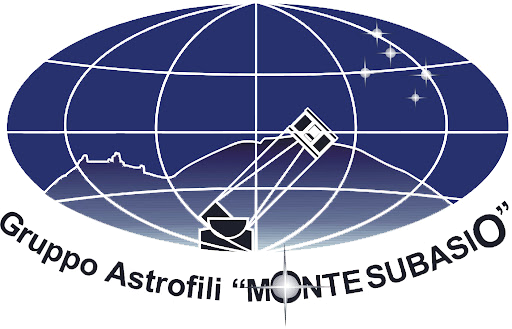DocTelescope 16” f4.5 goto “ DIAMOND”
Review by Spaccini Mariachiara
My passion for astronomy and astrophotography began when, at just 12 years old, my grandfather gave me my first telescope: a Newtonian on an equatorial mount. From that moment, my love for the sky ignited within me and has never faded.
As an astrophotographer, for years I dedicated myself to the wonders of deep skyobjects. Recently, however, a new intense passion has emerged: planetary astrophotography, to which I now dedicate myself with great enthusiasm.
Over the years, I’ve had the opportunity to try various types of telescopes for highresolution planetary imaging: Schmidt-Cassegrains, pure Cassegrains, Maksutov-Cassegrains, and most recently, a 12” Skywatcher Dobsonian.
I fell in love with the Dobsonian configuration, finding my 12” so good that I decided to take the plunge: to get myself the “definitive” telescope. I wanted a Dobsonian with a generous aperture, but also one that was extremely manageable, relatively lightweight (I’m awoman, and weight matters!), easy to transport, and above all, a true artisanal “masterpiece.”
No longer a commercial telescope, but an instrument built by a reliable, highperformance Italian company, made with the highest quality materials. For this reason, I turned to Marco Guidi of DocTelescope. In my opinion, the Dobsonians he builds are true works of art.
After an interesting phone conversation, Marco illustrated me every detail of his telescopes, and together we agreed on a 16” Dobsonian that would be light yet solid and easy to transport.
And that’s how it was created: my DocTelescope 16” f/4.5, dedicated to highresolution planetary imaging. I wanted to call it “Diamond” because, as we know, for a woman… a diamond is forever!
The Dobsonian is a 16” f/4.5 GoTo with Onstep motorization. For the optics, I relied on Marco’s advice, and he selected a certified Astroreflect primary and a Zen secondary.
In one word, the telescope is beautiful!
The finish and assembly of the optics are excellent. I’ve never owned a predominantly metal Dobsonian before, so I don’t have direct terms of comparison, but it’s clear that Marco has paid attention to every single detail. Both aesthetically and functionally, everything has been thoughtfully designed: the components – both standard and machined – are of the highest quality
design and build
The telescope’s structure is divided into three main parts: the secondary cage, the truss tubes, and the primary cage.
The latter is particularly versatile: it can be disassembled into two sections or transported as a single unit, as it’s incredibly
lightweight. To complete the setup, the electronic components include the Onstep GoTo motorization.
The secondary cage consists of two laser-cut aluminum rings joined by metal bars.
The secondary mirror is held in place by four thin-vane spider veins, which Marco had perfectly adjusted, as was the collimation of the secondary mirror.
This part of the telescope is incredibly light—I can lift it without the slightest effort—yet exceptionally solid.
The metal rings have holes, a solution that increases lightness without compromising rigidity. A Tecnosky Precision 2″ motorized focuser is mounted on the secondary cage, and there’s also a Vixen dovetail base for the finderscope.
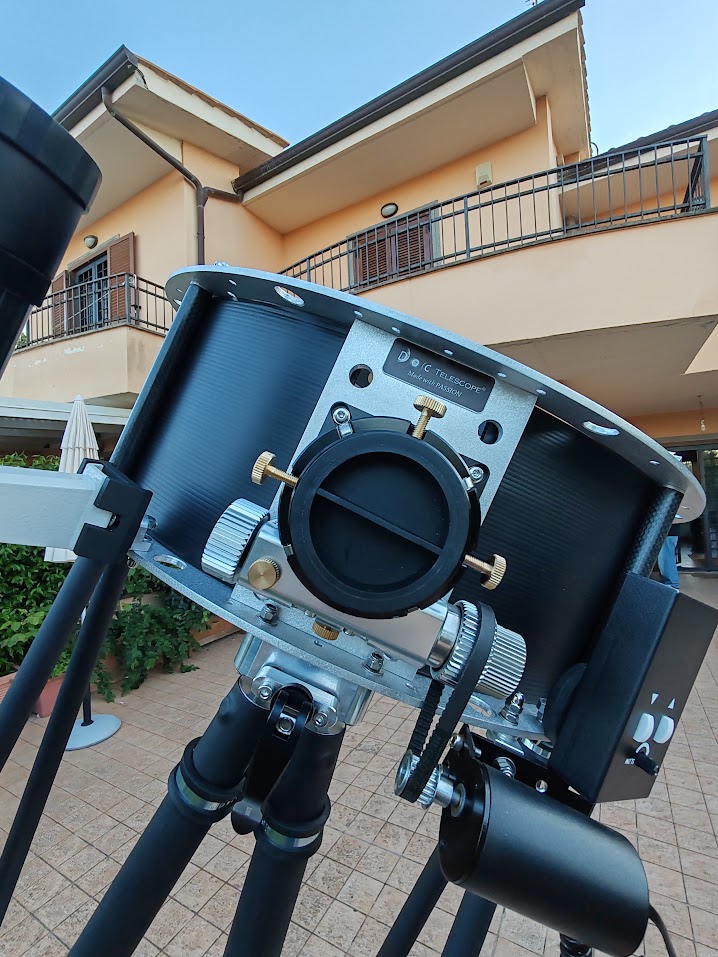
The truss tubes are lightweight and very strong. They have a carbon-like coating that gives them a very refined appearance.
The telescope has 8 truss tubes, each with spheres at the ends for quick attachment.
They are very light and they can be transported easily. The overall structure is formed by two truss tubes on each side of the square, which gives the telescope remarkable rigidity once assembled.
The primary cage is made from an aluminum structure, which is very light and
aesthetically pleasing. The two sliders are also made of aluminum.
The structure that secures the truss tubes is a metal “square” frame, connected to the primary cell with four knobs. This clever design allows the entire upper section (secondary and truss) to be removed as a single unit, making the telescope assembly extremely quick: 5 minutes or less.
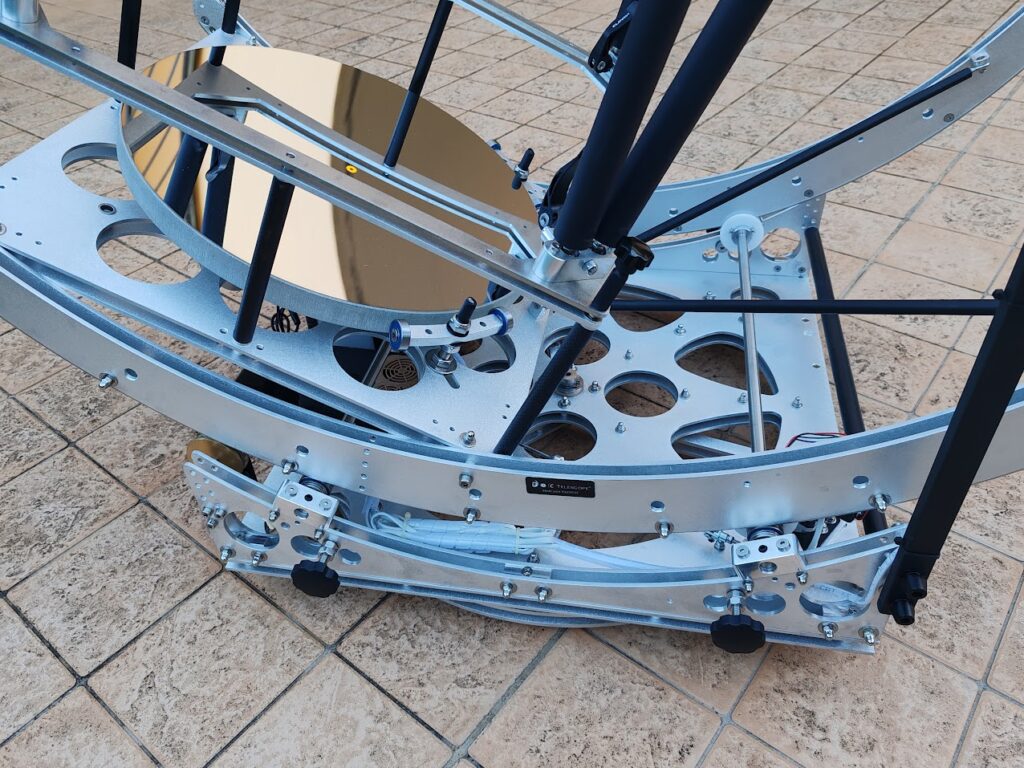
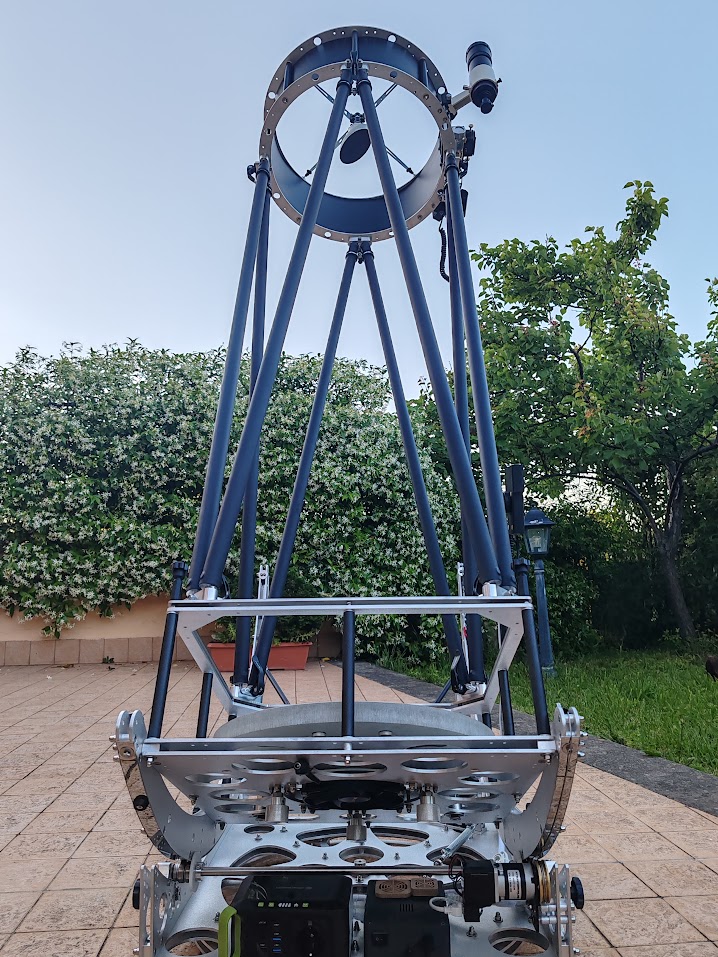
As designed by Marco, the mirror rests on an eighteen-point cell and is held in place only by gravity and two roller points located at the right and left corners of the cell itself. Although this reliance on gravity initially concerned me, Marco reassured me and clarified that there isn’t any danger of the mirror moving forward. The primary cage moves smoothly and precisely thanks to its two large aluminum half-moons that slide along a guide.
For collimating the primary mirror, there are three knobs on the back of the cell.
Marco explained that you only need to adjust two of them to achieve excellent collimation, and he was right.
I used a laser collimator with an orthogonality corrector and quickly collimated the mirror with minimal adjustments only made to those two knobs. Then, I used the Reego collimator for further fine-tuning.
The primary mirror is cooled by a large fan located at the center of the cell, which helps optimize the primary’s acclimation time.
The fan has a jack that easily connects to a power box.
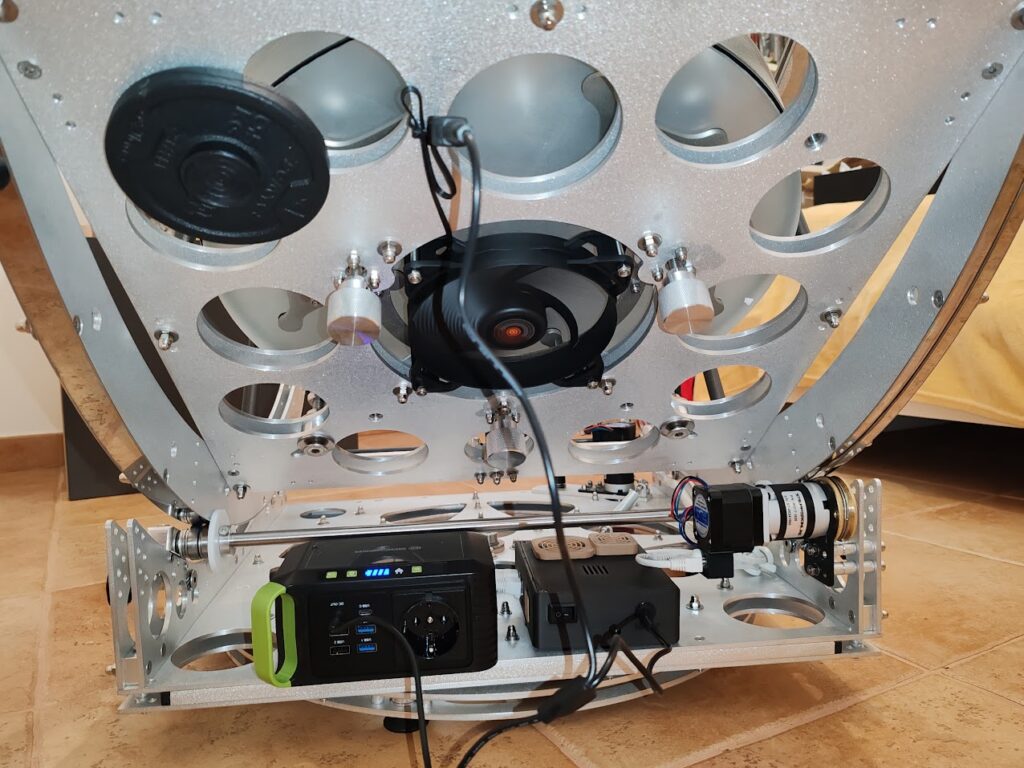
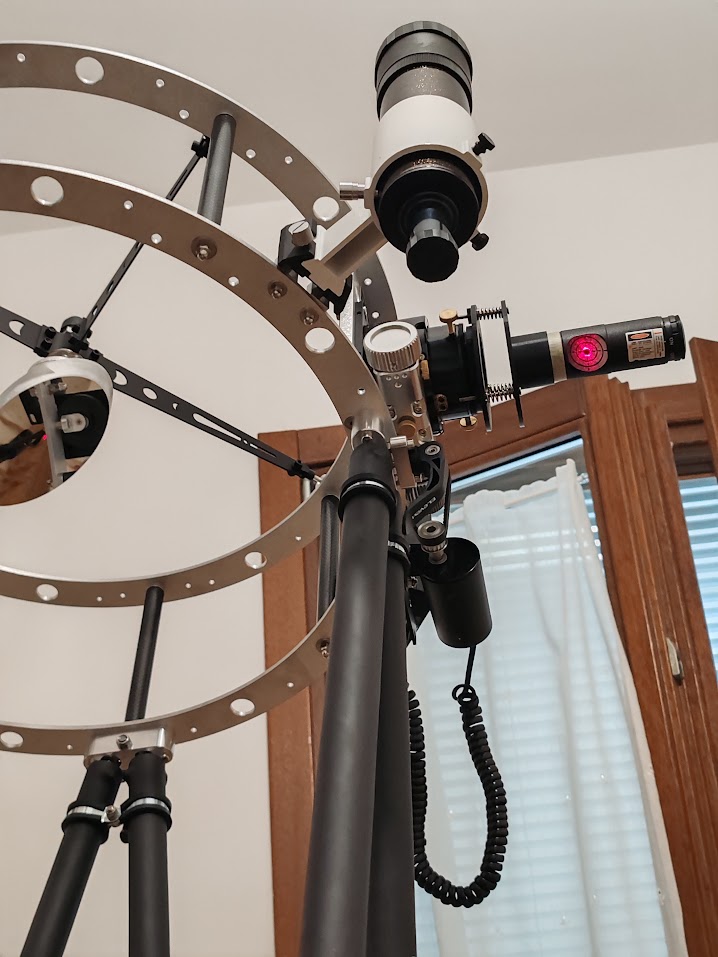
The structure supporting the floating cell has threaded holes designed for attaching counterweights if needed.
The primary cage rests on a base that carries the support bearings for azimuthal rotation. Once assembled, the DocTelescope has fluid movements in both axes.
The mounted structure feels solid despite its lightness. During my observing sessions, even after the GoTo movements, the collimation remains perfect.
ONSTEP – Motorizzation, Goto and Tracking
ONSTEP is an advanced, computerized GoTo system built
on an open-source Arduino platform. Its precision is
remarkable, flawlessly managing motors for pointing at and
tracking celestial objects.
My DocTelescope is also controlled by dedicated pad that directly interfaces with the ONSTEP motherboard, enabling alignment, pointing, and tracking.
ONSTEP integrates both a GPS for immediate location sensing and a Wi-Fi interface that allows telescope control via smartphone or tablet. You can also connect it to planetary software like SkySafari.
As a technology lover, I find it incredibly convenient to interface the telescope with planetarium apps and perform GoTo operations directly through them.
For more advanced control, there’s also a USB output that allows interfacing with a laptop PC and remote operation via the ASCOM platform and specific software like NINA. This provides the ability to connect the telescope, imaging camera, and any focusers or field rotators, managing everything remotely.
You can perform plate solving, pointing, and recentering of the framed field.
In fact, it’s my intention to exploit the 40cm aperture of my
Dobsonian to also capture some deep-sky images, utilizing
the short-exposure technique to minimize field rotation.
The motors connected to ONSTEP are powered by a 12V power bank.
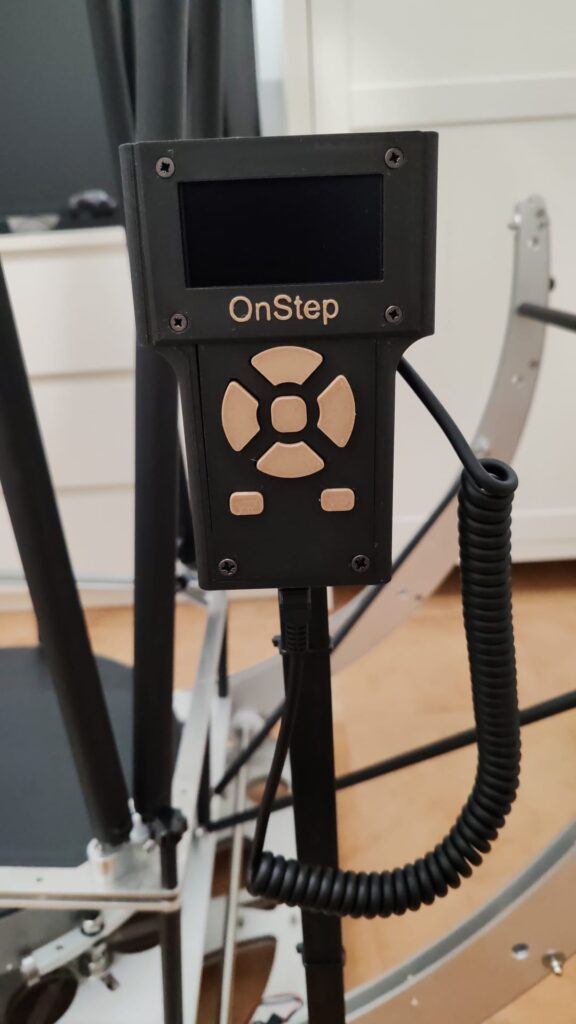
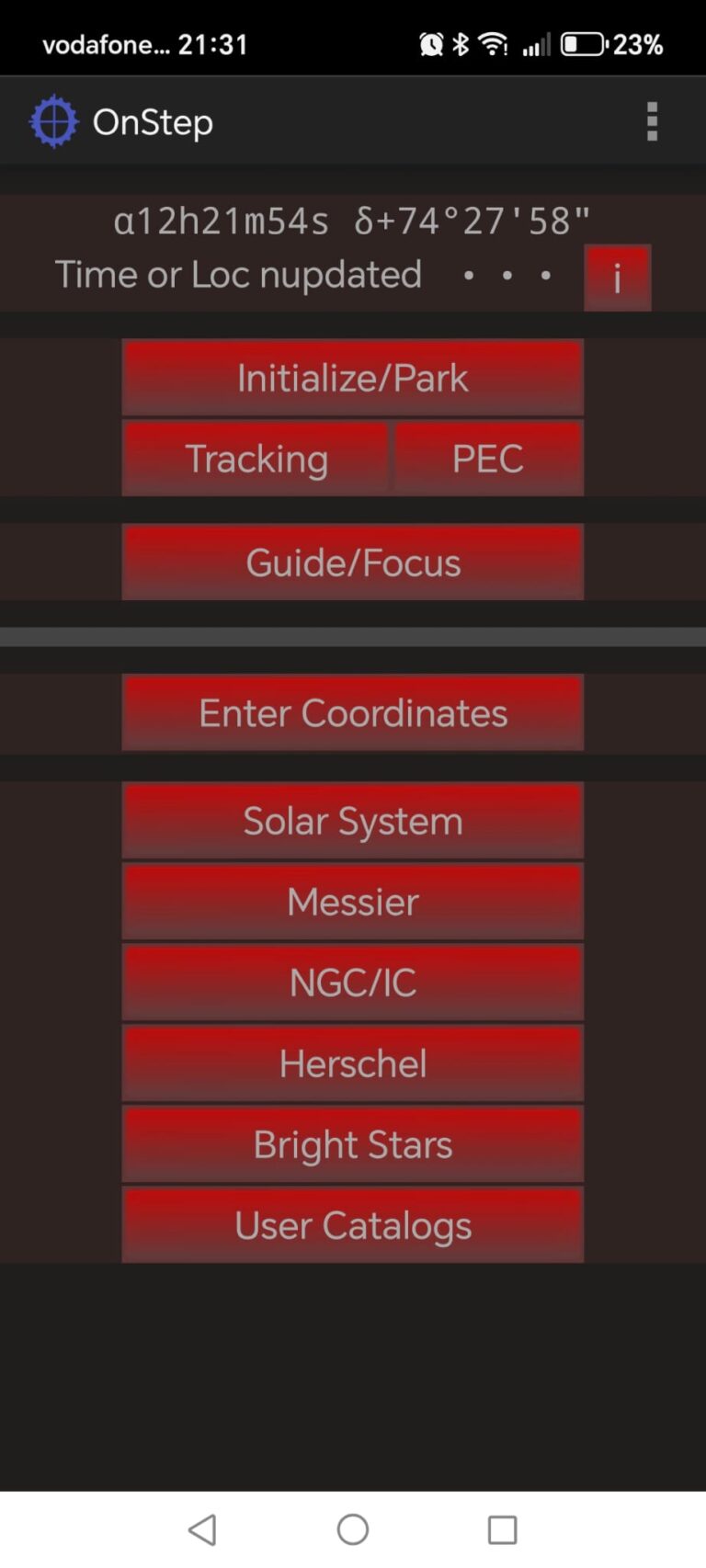
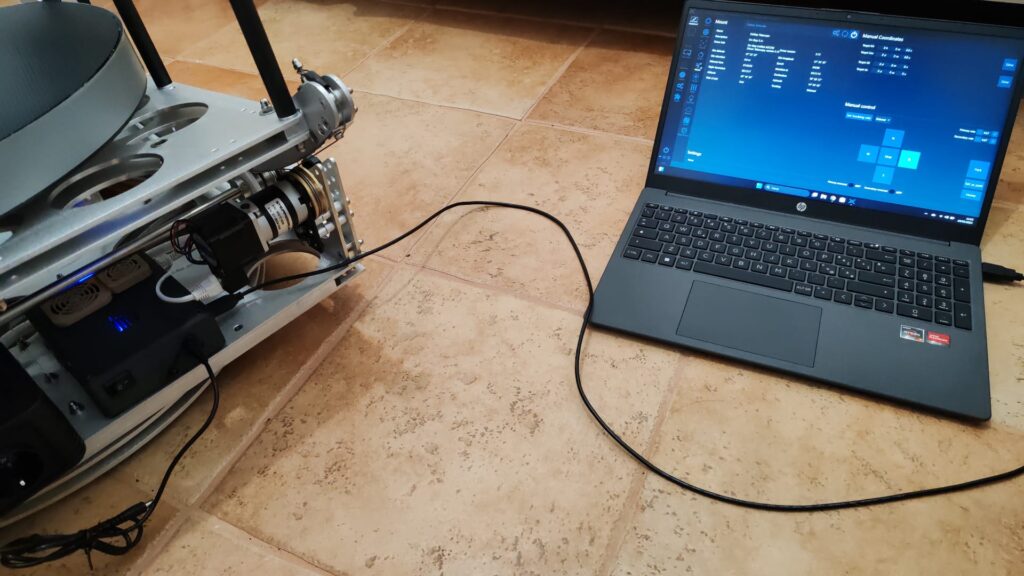
Optical performances and first impression
I’ve only had the chance to test the Dobsonian visually so far, and the view has been breathtaking! I don’t consider myself mainly a
visual observer, but with optics like these, it’s impossible not to
experience the thrill of llooking through the eyepiece!
The Moon appears truly spectacular in the eyepiece; the details are
sharp and clear: I can’t wait to capture it in highresolution with a planetary camera.
Deep-sky objects are no less impressive: under a good sky, I observed globular clusters (M13 was well-resolved and highly contrasted), planetary nebulae (the Dumbbell Nebula M27 was clearly visible, the Ring Nebula M57 was beautiful and enormous), and even some galaxies (M51 amazed me, I couldn’t
stop observing it).
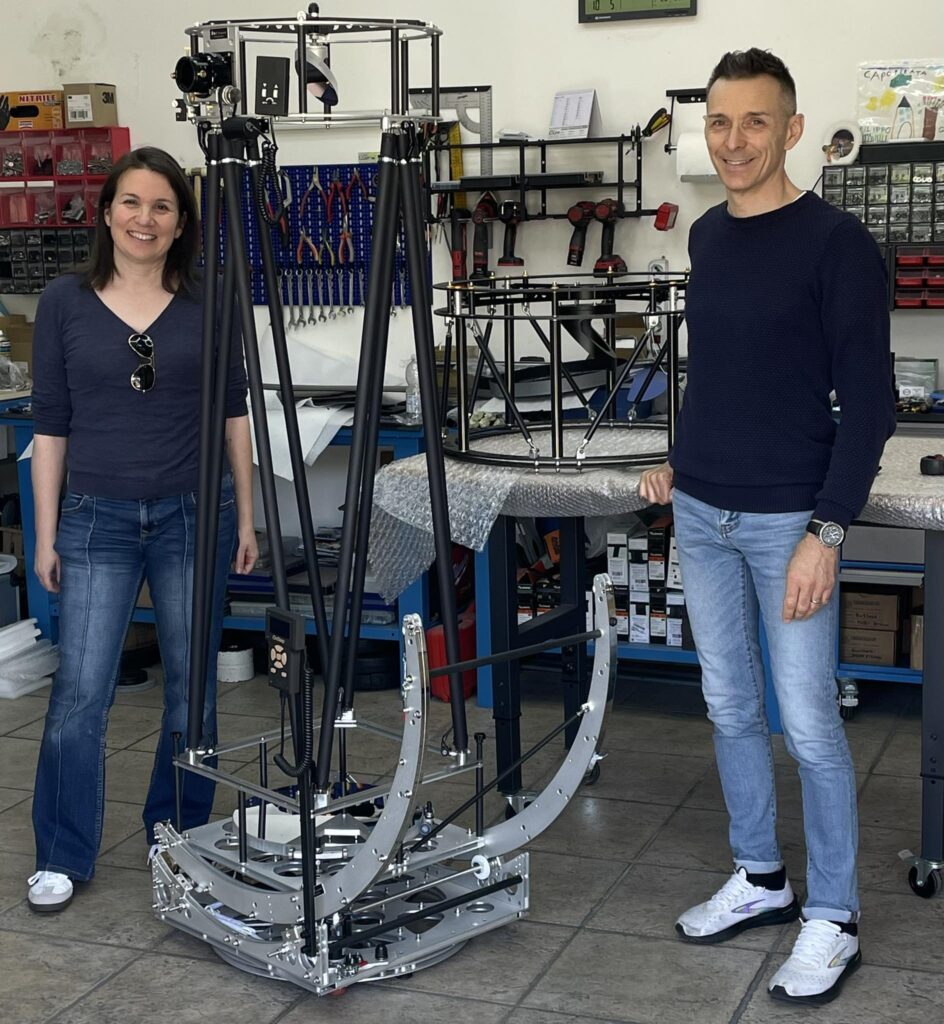
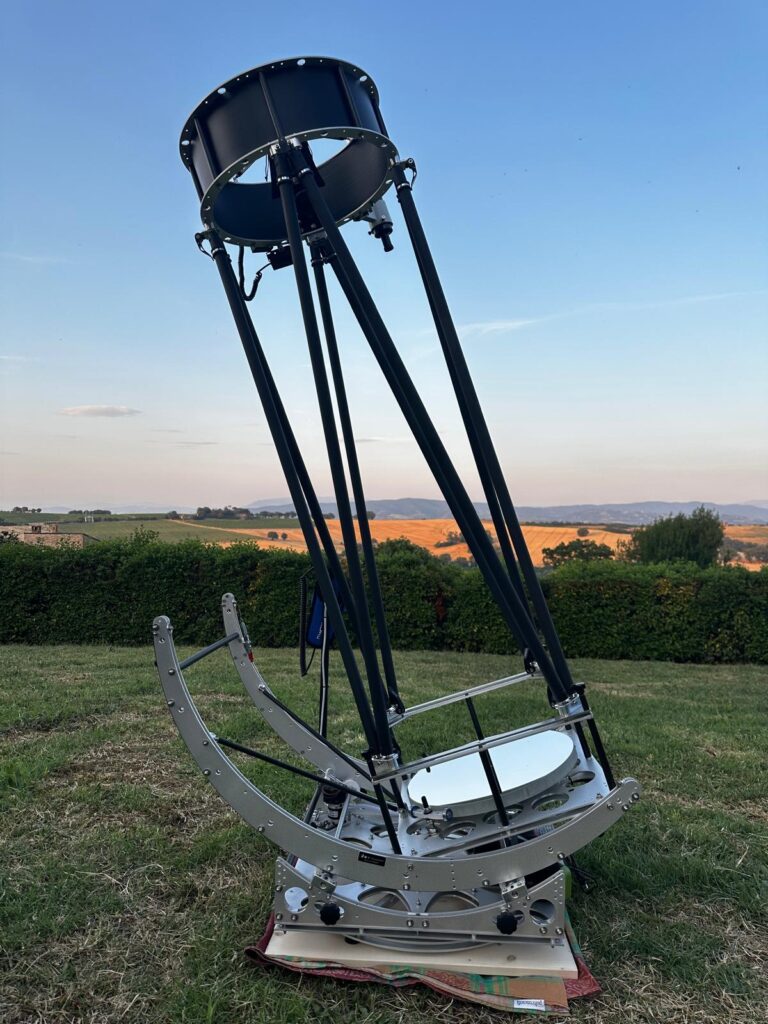
Now, I’m only waiting for the photographic test of “Diamond.”
The planetary season hasn’t begun yet this year; it will mainly be inautumn/winter. So, I’ll have to wait a bit, but I expect great, very great performance from this telescope!
gruppo astrofili monte subasio
Associazione di Promozione Sociale
via don luigi barabani, 31
Porziano (assisi)
06081- italy
